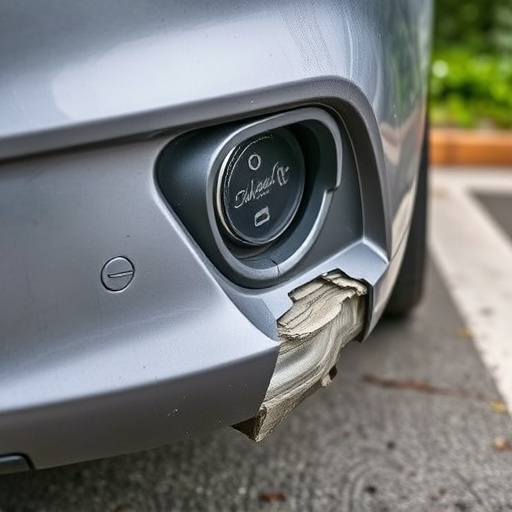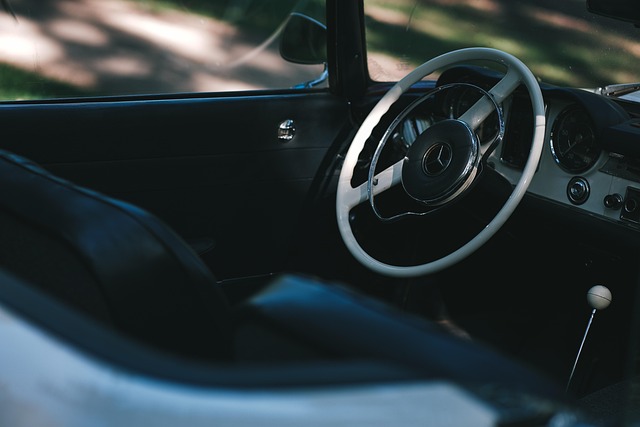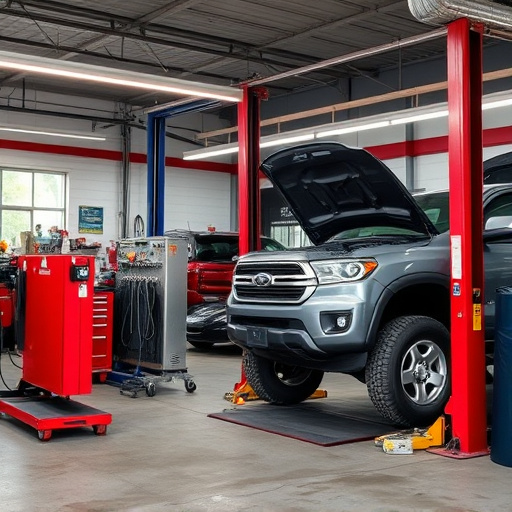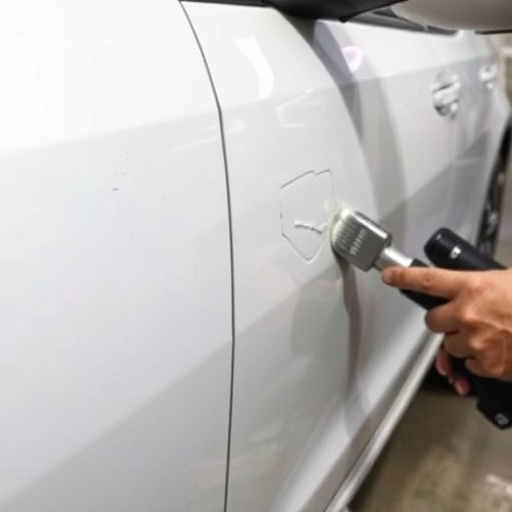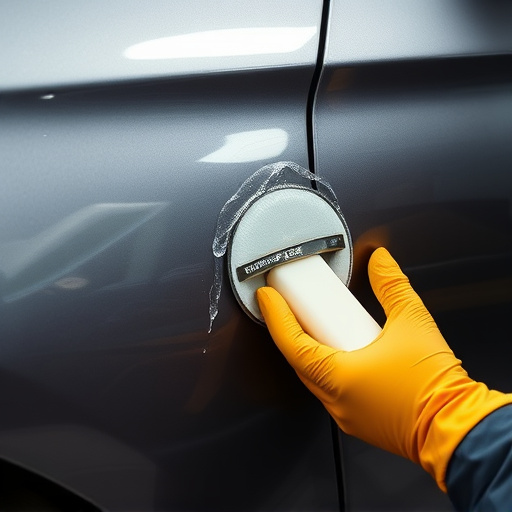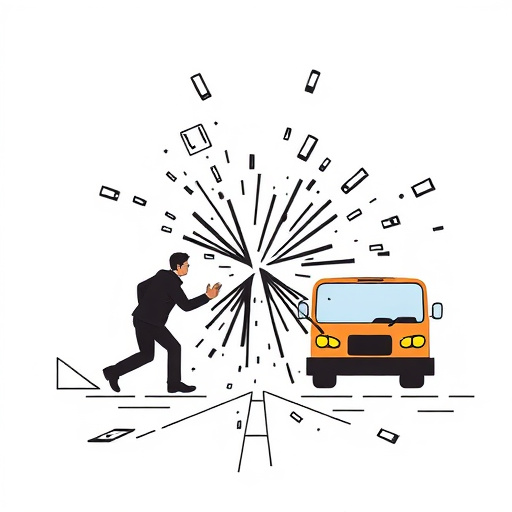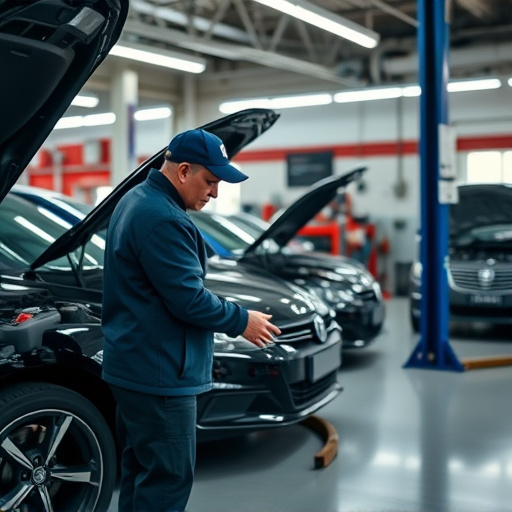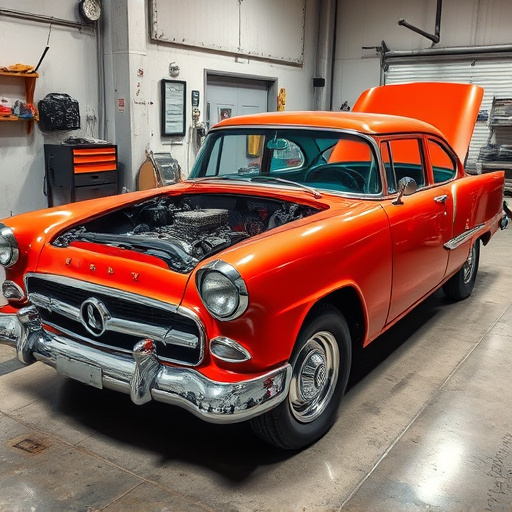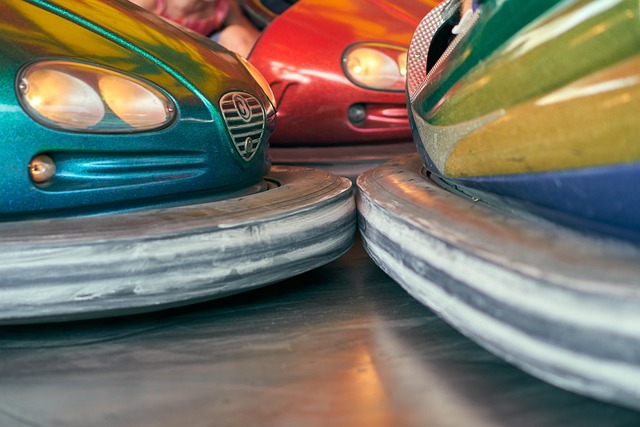Flood damaged vehicle repair begins with a thorough visual inspection and use of specialized tools to identify water intrusion. Initial evaluation guides cleaning strategy, focusing on safety using PPE and meticulous disassembly. Absorbent materials, fans, and dehumidifiers are employed for drying without heat sources. Restoring surfaces involves assessing damage, drying with dehumidifiers, mild detergent cleaning, disinfection, and fixing severe scratches or dents before final restoration.
When faced with a flood-damaged vehicle, proper interior cleaning is crucial for safe restoration. This guide outlines best practices for navigating the complex process of repairing and rejuvenating vehicles after catastrophic flooding. From assessing initial damage to implementing effective drying techniques and meticulous surface restoration, each step demands attention to detail. By following these practices, professionals can ensure a thorough clean, prevent secondary damage, and restore flood-affected cars to their pre-disaster condition, optimising post-flood repair outcomes.
- Assessing Flood Damage: Initial Inspection Procedures
- Safe Disassembly and Drying Techniques for Interior Components
- Restoring Surfaces: Best Practices for Cleaning and Disinfection
Assessing Flood Damage: Initial Inspection Procedures
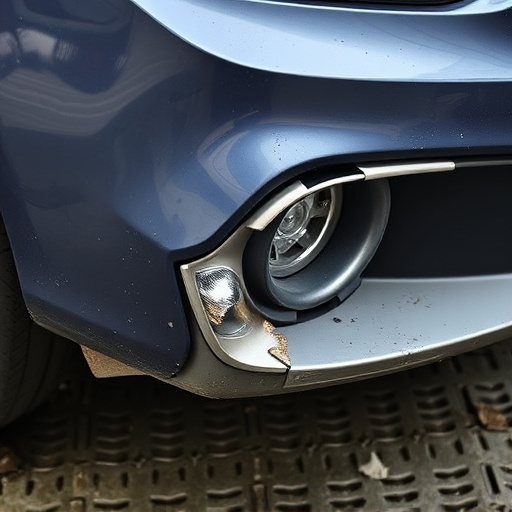
After a flood, assessing the damage to a vehicle is crucial for effective interior cleaning and subsequent repairs in flood damaged vehicle repair. The initial inspection should cover both visual examination and checking for water intrusion into critical components like electrical systems, air bags, and engine compartments. Experienced technicians from reputable car repair services will use tools such as moisture meters and thermal imaging cameras to pinpoint affected areas.
For instance, in a Mercedes-Benz collision repair, the first step is to ensure that all safety features function correctly after removing seats, floor mats, and other interior components to access hidden water lines or damage. This meticulous initial evaluation informs the cleaning strategy for each section of the vehicle, ensuring comprehensive restoration without overlooking any floodwater remnants.
Safe Disassembly and Drying Techniques for Interior Components
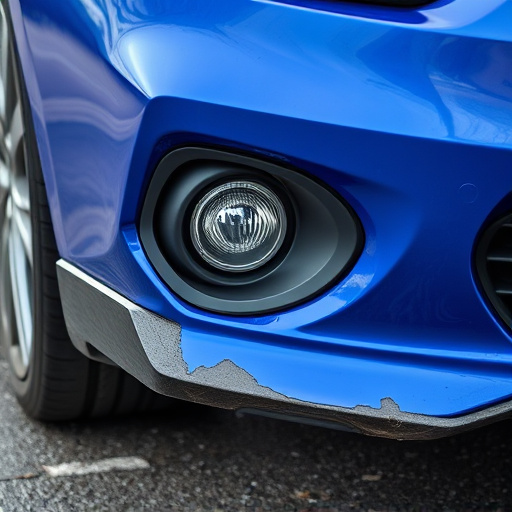
When dealing with a flood-damaged vehicle, safe disassembly and drying techniques are paramount for interior components. Before beginning any restoration work, ensure proper personal protective equipment (PPE) is worn to mitigate exposure to mold, mildew, and other hazardous substances that may have been introduced during the flooding event. This includes gloves, masks, and goggles.
Disassemble affected areas carefully, taking note of where each component belongs. For instance, remove floor mats, seats, and trim pieces to expose hidden areas. Use clean, absorbent materials like towels or drying cloths to blot excess water from these components. Avoid using heat sources such as hairdryers as they can lead to warping or damage to materials. Instead, employ fans and dehumidifiers to expedite the drying process. Properly cleaned and dried interior components are crucial for a successful flood damaged vehicle repair, ensuring both functionality and aesthetics in restored vehicles, whether through in-house fleet repair services or automotive collision repair operations.
Restoring Surfaces: Best Practices for Cleaning and Disinfection
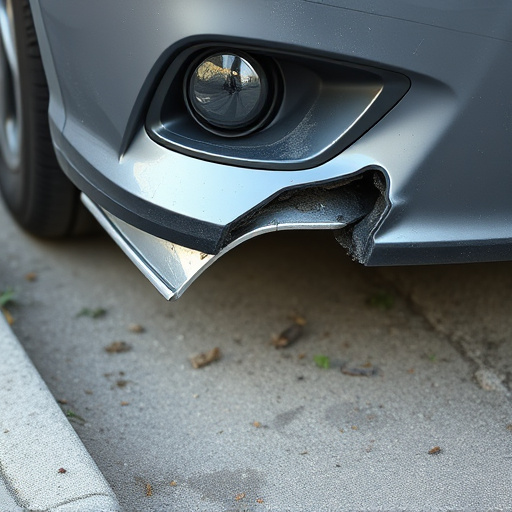
Restoring surfaces is a crucial step in flood-damaged vehicle repair, as it ensures not just aesthetics but also prevents further damage and health risks. The first priority should be to assess the extent of water intrusion and subsequent damage. Once identified, all affected areas must be thoroughly dried using dehumidifiers and air dryers to prevent mold growth and ensure proper adhesion for cleaning and coating products.
For cleaning, a mild detergent solution is recommended for most surfaces. For areas with stubborn stains or signs of rust, a specialized automotive cleaner can be used. After cleaning, disinfection is essential to kill bacteria, viruses, and mold spores. Use an appropriate disinfectant, following the manufacturer’s instructions, focusing on high-touch areas like dashboards, door panels, and steering wheels. In the case of severe scratches or dents from the flood event or previous accidents (requiring automotive collision repair), address these issues before proceeding with the disinfection process to ensure optimal results in the final automotive restoration.
When repairing a flood-damaged vehicle, proper interior cleaning practices are vital to ensure a safe and hygienic space. By following these best practices, from assessing damage to implementing effective disinfection methods, you can navigate the restoration process efficiently. Remember, thorough cleaning is key to mitigating mold growth and restoring the vehicle’s interior to its pre-flood condition, making it a crucial step in the flood damaged vehicle repair process.
